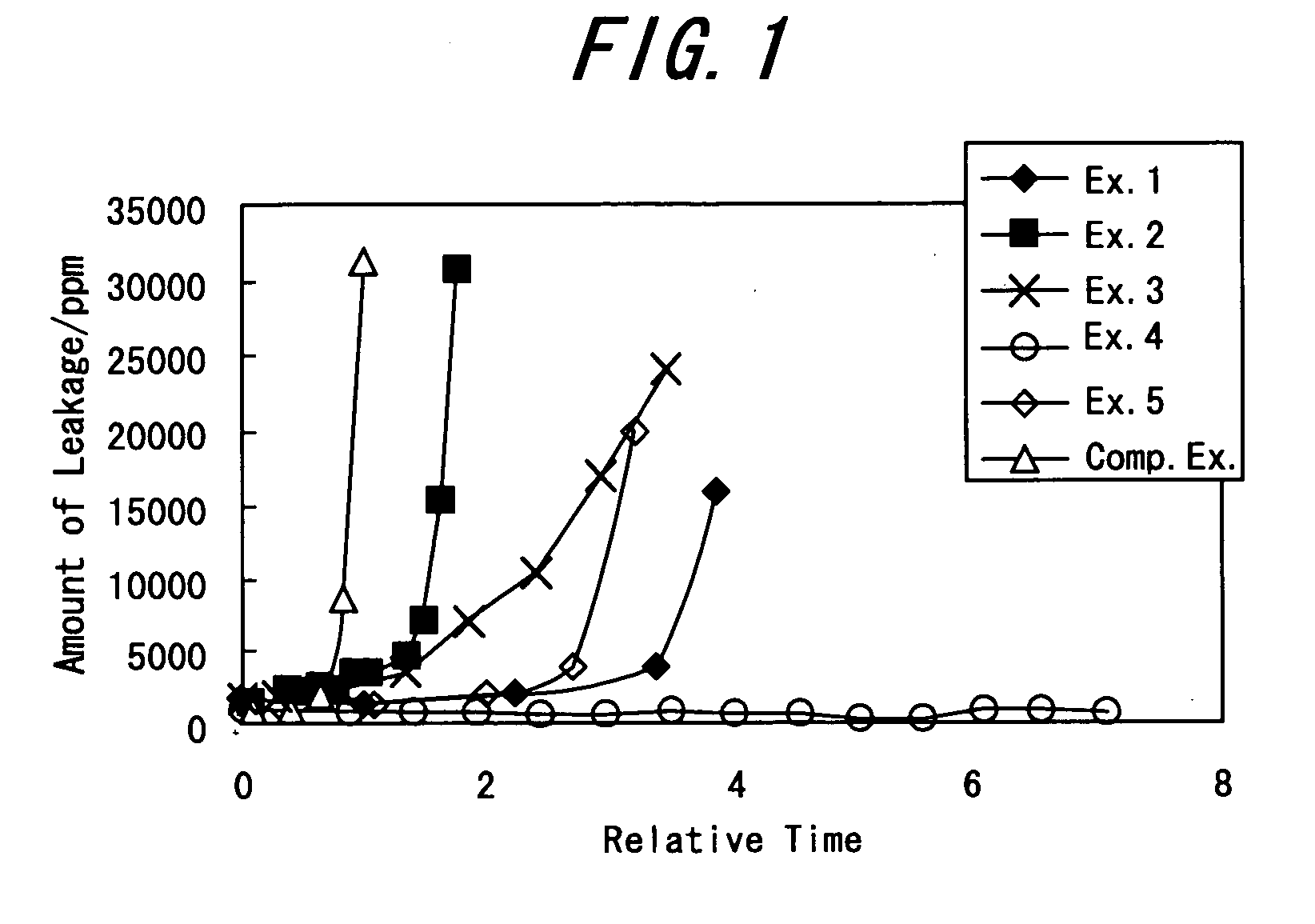Fuel cell membrane electrode and fuel cell
a fuel cell membrane electrode and fuel cell technology, applied in the field of fuel cell membrane electrode and fuel cell, can solve the problems of insufficient measure to prevent the deterioration of the membrane electrolyte, the prone damage of the membrane electrode, and the improvement of the membrane electrode itsel
- Summary
- Abstract
- Description
- Claims
- Application Information
AI Technical Summary
Benefits of technology
Problems solved by technology
Method used
Image
Examples
example 1
[0066] A fuel cell component cell according to the embodiment of the present invention was prepared, and its performance was evaluated.
[0067] A TiO2 powder (tradename: ST-01, ISHIHARA SANGYO KAISHA) was added to a cation exchange polymer solution (5% Nafion (registered trademark), Du Pont) with the use of ethanol as a solvent such that the volume ratio of the solids when dry would be 1:1, thereby preparing a mixture (A). The mixture (A) was coated onto all of one surface of a perfluorosulfonate resin membrane (trade name: Nafion 112, Du Pont) as an electrolyte membrane such that the thickness of an active oxygen removing layer would be 15 μm, whereby the active oxygen removing layer was formed on the surface of the electrolyte membrane.
[0068] Carbon black having 45% by weight of platinum-based catalyst particles with an average particle diameter of 3 nm carried thereon (cathode catalyst), and carbon black having 54% by weight of platinum / ruthenium-based catalyst particles with an ...
example 2
[0072] A fuel cell component cell, as an electrolyte membrane / electrode assembly, was formed and subjected to a durability evaluation test in the same manner as in Example 1, except that activated carbon (trade name: MAXSORB, Mitsubishi Chemical Corp.) was used as the active oxygen removing material instead of TiO2 used in Example 1.
example 3
[0073] Ti(O-iC3H7)4 (337.6 g) as a Ti source, and 17.3 g of Si(OC2H5)4 as a Si source were mixed, and added to 4.4 liters of water at 80° C. for hydrolysis. The mixture was stirred for 2 hours in water at the same temperature for aging. The resulting sol was filtered, thoroughly washed to remove the resulting alcohol, and dried. Then, the residue was heated for 5 hours at 500° C. for calcination to obtain a compound oxide TiO2—SiO2. A fuel cell component cell, as an electrolyte membrane / electrode assembly, was formed and subjected to a durability evaluation test in the same manner as in Example 1, except that the compound oxide TiO2—SiO2 was crushed and used as the active oxygen removing material instead of TiO2 used in Example 1.
PUM
| Property | Measurement | Unit |
|---|---|---|
| thickness | aaaaa | aaaaa |
| particle diameter | aaaaa | aaaaa |
| temperature | aaaaa | aaaaa |
Abstract
Description
Claims
Application Information
 Login to View More
Login to View More - R&D
- Intellectual Property
- Life Sciences
- Materials
- Tech Scout
- Unparalleled Data Quality
- Higher Quality Content
- 60% Fewer Hallucinations
Browse by: Latest US Patents, China's latest patents, Technical Efficacy Thesaurus, Application Domain, Technology Topic, Popular Technical Reports.
© 2025 PatSnap. All rights reserved.Legal|Privacy policy|Modern Slavery Act Transparency Statement|Sitemap|About US| Contact US: help@patsnap.com

